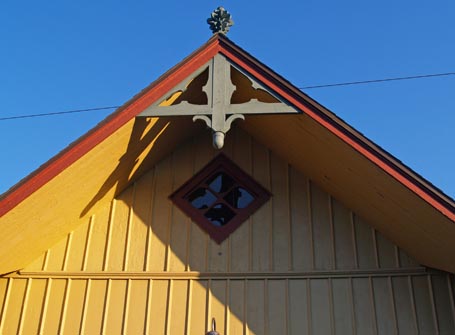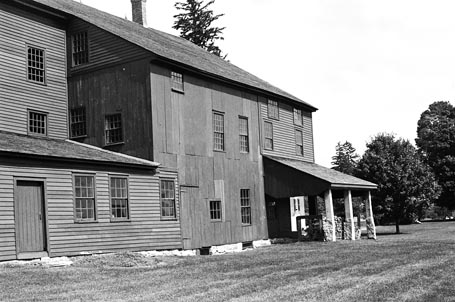
Entries from March 1, 2010 - March 31, 2010
Maine Museum of Photographic Arts
Browsing through the recent Art Issue of Maine Home + Design magazine I discovered an exciting development -- the Maine Museum of Photographic Arts. It's in an early fund-raising stage. Inspired by a well-received 2009 photography exhibit co-curated by gallery owner Elizabeth Moss, the new Maine Museum of Photographic Arts (MMPA) hopes to represent the work of 200 contemporary photographers, film/video makers, and new-media artists working in Maine. Their first goal is to create a virtual museum comprised of a full-featured website to display artists' work, interviews (via podcasts), resources, and more.
 Elizabeth Moss Gallery and Maine Home + Design magazine are holding a MMPA fund-raising exhibit titled Capture: 50 Photographic Artists to run April 2 through May 9, 2010 at the former W.M. Home located at 190 US Route One, Falmouth, Maine. Nearly 100 prints and a sampling of new-media works will be on display. Attend the opening reception April 2, 2010 from 5-7pm.
Elizabeth Moss Gallery and Maine Home + Design magazine are holding a MMPA fund-raising exhibit titled Capture: 50 Photographic Artists to run April 2 through May 9, 2010 at the former W.M. Home located at 190 US Route One, Falmouth, Maine. Nearly 100 prints and a sampling of new-media works will be on display. Attend the opening reception April 2, 2010 from 5-7pm.
Of the 50 featured photographers, a few caught my attention: Jeffrey Becton, Tonee Harbert, Christopher Becker, John G. Kelley, Scott Peterman, and Cig Harvey.
Visit the MMPA Kickstarter site to view a quick video about the museum and to become a founding contributor. Spread the word in support of the photographic arts.
by Katie Hutchison for House Enthusiast
Museum of Arts & Design (MAD): Artist's book binds laser-cut pages portraying house in sections
At MAD through April 4, 2010
 Section image by Katie Hutchison Studio The image above captures a rare moment during construction when a building section, typically illustrated in an architectural drawing, is visible in reality on site.
Section image by Katie Hutchison Studio The image above captures a rare moment during construction when a building section, typically illustrated in an architectural drawing, is visible in reality on site.
The resolution of the building section in relation to the plans and elevations often drives the design of a building. I know it’s where I focus much of my attention when designing a home. I suppose the attraction is the third dimension, which I wrote a primer about here.
The building section is particularly concerned with the space we shape or carve above, below, and around us. I would argue that it’s the most experiential of the orthogonal drawings which architects include in construction drawing sets. Still, it describes a somewhat analytical experience.
Olafur Eliasson has created an artwork which allows that experience to migrate from the rational to the emotional realms of our minds. His creation Your House 2006 is on display as part of the “Slash: Paper Under the Knife” exhibit at the Museum of Arts & Design at Columbus Circle in Manhattan. The artwork is a 11.5” x 17.75” x 4.5” hand-bound book of 454 leaves (908 pages) in which each laser-cut leaf represents a cross section at a scale of 85:1 sliced through the artist’s house in Denmark at 2.2 cm intervals.
The cut-out sections create spatial voids within and between the pages. You can’t touch the book which is displayed in a Plexiglas case. But a monitor above it displays the turned pages in fast action, so the spaces carved from the pages appear animated, much the way a flip book brings still images to life. Flipping quickly through the pages of Your House allows you to experience the house's architecture as if you're traveling through it.
It captured my imagination as a dollhouse might. I peered into the book’s tiny carved rooms, stages for fanciful musings rich with architectural detail, and felt connected to this house on the other side of the Atlantic. In a 2009 TED talk Eliasson describes his work as being concerned with “making space accessible”. Indeed, he’s made the cerebral concept of the building section accessible in a new, playful and more tangible way. Later in the same TED talk Eliasson asks rhetorically, “How do we create an idea which is both tolerant to individuality and also to collectivity?” He answers his own rhetorical question via Your House; the artwork's individual leaves form the collective of the book which allows individual museum goers to collectively share the spatial story of the artist’s home.
by Katie Hutchison for House Enthusiast
Design snapshot: Arch-top window tableau
 Click on this photo to see it in the KHS photo note cards/prints gallery.I keep coming back to that ochre color. Here it’s a backdrop for three, white-trimmed, arched-top windows amidst a dynamic tableau. This partial elevation of an historic building (c. 1874) captures a similarly appealing play of color, shape, texture, shadow and rhythm as the board-and-batten gable-end design snapshot I posted last week.
Click on this photo to see it in the KHS photo note cards/prints gallery.I keep coming back to that ochre color. Here it’s a backdrop for three, white-trimmed, arched-top windows amidst a dynamic tableau. This partial elevation of an historic building (c. 1874) captures a similarly appealing play of color, shape, texture, shadow and rhythm as the board-and-batten gable-end design snapshot I posted last week.
The porch eave trim picks up on the arch motif and punctuates it with playful circles à la doughnuts. The horizontal weft of the clapboards is echoed in the strong horizontals of the porch's decorative eave line, in the bold, white, upper band course, and in the bracketed, overhanging eave. The rhythm of the three windows is balanced by the rhythm of the paired, delicate brackets, marching between window beats. A sliver of the burnt-red metal roof at the top of the image suggests how the standing seams set the stage for a vertical emphasis on the roof.
Interestingly, both this design snapshot and last week’s feature train stations. Happily, a house can be informed by a variety of sources. Consider influences beyond dwellings.
by Katie Hutchison for the House Enthusiast
Design snapshot: Board-and-batten gable-end
 I’m always looking for inspiring exterior gable-end treatments. It’s the board-and-batten siding that initially drew me to this one. Board-and-batten siding harks back to Norway and Sweden and is often spotted in New England on agricultural and Stick-and-Shingle style buildings.
I’m always looking for inspiring exterior gable-end treatments. It’s the board-and-batten siding that initially drew me to this one. Board-and-batten siding harks back to Norway and Sweden and is often spotted in New England on agricultural and Stick-and-Shingle style buildings.
Subtle moves, like increasing the spacing of the upper gable battens from the batten spacing below the demising horizontal trim, add interest to the pattern and differentiate the tippy-top from the middle-top. Both batten arrangements are centered on the ridge and set up their own rhythm.
In addition to the siding pattern, the diagonally placed square window animates the peak. The finial and large overhanging rake outfitted with a decorative rake truss create compelling shadow lines and shapes. The color scheme of ochre siding, burnt-red trim, and faded-green accents makes for a warm, sunny, yet sophisticated look.
I find the combination of Scandinavian and New England vernacular influences on this gable design irresistible.
by Katie Hutchison for the House Enthusiast
Web tour: House museums on Squidoo
 Hancock Shaker Village Laundry and Machine ShopYou may recall my recent web neighbor post about Fivecat Studio and their blog Living Well in Westchester. In my post I referenced their Squidoo lens "Your Complete Guide to Residential Architecture", which is an extensive compilation of links. I suggested they include a section devoted to house museums, and now they have. Scroll down through their updated guide to link to house museums from around the country.
Hancock Shaker Village Laundry and Machine ShopYou may recall my recent web neighbor post about Fivecat Studio and their blog Living Well in Westchester. In my post I referenced their Squidoo lens "Your Complete Guide to Residential Architecture", which is an extensive compilation of links. I suggested they include a section devoted to house museums, and now they have. Scroll down through their updated guide to link to house museums from around the country.
I've written here about several notable New England house museums, like Hancock Shaker Village in Pittsfield, Mass. (which is shown above); Philip Johnson Glass House in New Canaan, Conn.; Gropius House in Lincoln, Mass.; and Yin Yu Tang in Salem, Mass., which I mentioned in my last post. I expect to explore and share with you additional compelling regional house museums in the coming months. Meanwhile, consider those I've already featured. You might be surprised by the unique architecture and history not far from your back door.
by Katie Hutchison for House Enthusiast















